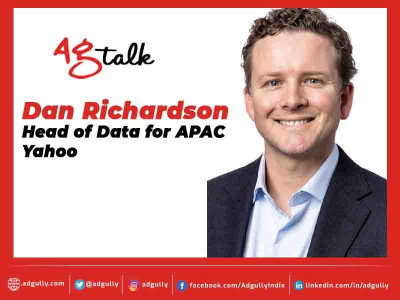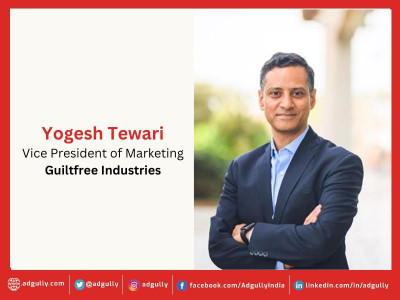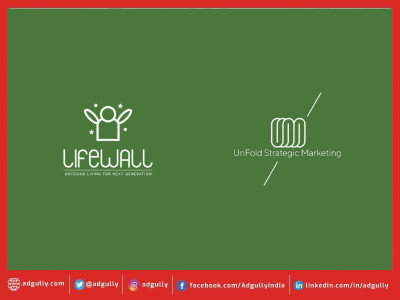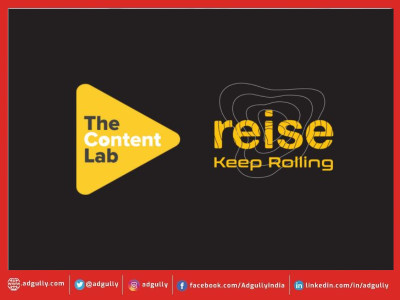Contextual targeting is key in this changing environment: Dan Richardson, Yahoo
Delivering his keynote address at Adgully’s DATAMATIXX 2022 Summit & Awards on ‘A manifesto for a better Internet in 10 slides or less’, Dan Richardson, Head of Data, APAC, Yahoo, highlighted the many learnings that Yahoo has experienced along the way. “Three simple words are important if we go back and have a look at history, which are Instantaneity, Connection and Joy. Earlier, we would hear a song on the radio on a Sunday afternoon, but now we can hear the same song by typing it on Spotify and other platforms. That is instantaneity.”
To know more about what are the tools at the disposal of the marketers to target; key things brands and marketers should keep in mind when advertising in a cookieless world, and much more.
With non-addressable (unknown) audiences in majority in most of the markets, what are the tools at the disposal of the marketers to target them? How effective are tools like machine learning, AI, and contextual targeting?
The non-addressable, or unknown ‘ID-less’, audience is at various stages, depending on the market. In India, Chrome has 88% share and Android 69%, However, as iPhone gains ground, the pool of unknown users on Safari or iOS will only increase. For other markets like Singapore, the unknown audience is already much larger. Today, 30% of the inventory is without ID. By 2023, that number is set to drastically increase to 75%. Advertisers and publishers need solutions that can help them reach and monetise their audiences in this changing environment, where users may opt out and can’t be identified.
When we meet with clients, we bring different tools to the table to help them deliver more effective marketing in this environment. Contextual targeting is key, as it works based on categorising the URL or the page, its content or the category of app someone is using. No cross-site tracking is required. A much bigger part of the toolkit is asking how contextual data signals – when combined with other programmatic signals such as one’s device type, time of day or weather – can be used to feed machine learning.
What we are finding is that our algorithm has the ability to use all these signals in a very smart way. Using our known or addressable audience as the seed of knowledge, the algorithm validates all the unknown user signals in real time to successfully infer the audience’s demo, interests and likelihood to perform an action. We call these Next Gen Audiences and have been seeing double digit improvements to publisher monetisation in our ad exchange, cost efficiency and consumer engagement metrics, particularly on iOS and Safari. So yes, these solutions are effective. As importantly, they are also privacy-safe, which is what consumers value.
With the world moving towards regulations like GDPR (General Data Protection Regulation) and enhanced user privacy, are we heading towards a world of cookieless advertising?
Each APAC market that we deal with is dynamically iterating data protection regulations. India recently withdrew the Personal Data Protection (PDP) Bill, 2019 and is working on a new draft aimed at safeguarding data and making platforms accountable. This is a good thing, since it recognises the mass data awakening amongst consumers and the need to protect consumer privacy. For the advertising business though, it makes it harder to harvest identifiers in a one-size-fits-all way. Thinking ahead, marketers will need a dual strategy:
First up, get the most out of compliant first party data and introduce a layer of good governance and ethics. CRM is a huge part of this. If you have little first party data, partner with those who can help you meet this criteria.
Secondly, use alternative identity solutions which can function in cookieless environments, combined with smarter attribution. In this respect we are seeing an improvement in cost-per conversions for advertisers using ClickID, Yahoo’s pixel or server-to-server based attribution. Especially when combined with ConnectID, our unified identity solution that uses consent-based, first-party data drawn from millions of opted-in users across our global portfolio of O&O media properties.
With respect to the use and proliferation of browser cookies, especially third-party cookies, I think we can agree more checks and balances are needed. New regulations have led to immense positives, especially with regard to loyalty, ecommerce and content, which are seeing an improvement in quality as the data value exchange becomes core. With Yahoo being a consumer-facing brand with a user-base of 900 million globally, we are keenly aware of what is at stake here and how to keep consumers feeling safe and valued.
What are the key things brands and marketers should keep in mind when advertising in a cookieless world so that they will remain relevant? How can marketers consider their platform partners and focus on those that can deliver results without cookies?
For marketers, investing in first-party data is more critical than ever. Four steps to consider in building your first party data strategy are:
- Invest in CRM data. Consumer facing data is the source of effective and compliant advertising.
- Establish a clear value exchange to get user consent. Respecting user privacy builds trusted relationships.
- Encourage user registration. In a cookieless world email becomes the primary identifier for digital advertising
- Find a trusted identity partner. Identity solutions activate your data in the cookieless world.
From Yahoo’s perspective, because our entire advertising stack is built on first party data, we feel we are well set up to tackle any changes to tracking and regulation.
Do you think it is time for the open web advertising business model to transition beyond CPM (cost-per-thousand impressions) in keeping with the changing times?
The CPM model is a necessary part of the advertising business, especially for non-performance or click-based (CPC) channels such as search or in-feed native ads.
At the heart of this question is: What are the metrics that matter most to marketers? And, how do changes to third party cookie tracking, device IDs and privacy regulation inform these?
The advertising industry has been on a positive journey over the past 15 years, moving away from last touch conversion attribution towards a multi-touch view, which allows marketers to see the consumer path to purchase and assign the appropriate value along the chain. This has become more difficult over the years due to cookie-blocking by browsers and users opting out on iOS, but smart innovation and alternative identity solutions are helping connect the dots, in a way that respects consumer privacy.
The other positive step has been building on the ‘quality’ not ‘quality’ argument. First with viewability standards and now with “attention” metrics. A new study by Yahoo and our partner the Omnicom Group threw up an interesting finding from research conducted across Yahoo’s digital properties – 53% of all ad formats studied met viewability standards, but achieved less than 1 second of active attention. This is significant because it shows that viewability is a technology-centric metric, whereas attention is about human engagement.
















Share
Facebook
YouTube
Tweet
Twitter
LinkedIn